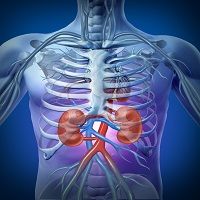Article
Stronger Guidelines Needed for Nephrologists and Pediatric Rheumatologists who Treat Pediatric-onset Lupus Erythematosus
Author(s):
Pediatric-onset lupus erythematosus (pSLE) frequently involves care coordination between rheumatologists and nephrologists. Almost half of all patients with pSLE will develop some form of lupus nephritis, which requires prolonged (and often toxic) therapy.

Clinical guidelines don’t just happen. Consensus-building takes time and should be supported by exhaustive, quantifiable research. Even after a treatment consensus is reached, it must be updated to reflect new medications, treatment pathways, and techniques. For conditions in which treatment typically intersects with more than one specialty, consensus can be even more difficult to reach.
Pediatric-onset lupus erythematosus (pSLE) frequently involves care coordination between rheumatologists and nephrologists. Almost half of all patients with pSLE will develop some form of lupus nephritis (LN), which requires prolonged—and often toxic—therapy and can result in increased risk for renal failure, cardiovascular disease, and the granddaddy of them all: death.
Guidelines for when to perform a first biopsy for adult patients with SLE are well-established. But, according to the authors of a new research article in Pediatric Rheumatology, “Pediatric rheumatologists and nephrologists worry that applying these guidelines to all children may be inappropriate, and the editorial accompanying the publication of the ACR guidelines warns that they should not be applied to children or even adult males. However, pediatric specific guidelines are currently not available.”
The research article involved a web-based survey designed to assess current practice patterns among pediatric nephrologists and pediatric rheumatologists. The survey was distributed to members of Midwest Pediatric Nephrology Consortium and the Childhood Arthritis and Rheumatology Research Alliance. More than 100 rheumatologists and more than 70 nephrologists responded to the survey.
Survey questions were based on 4 categories: Decision-making for first biopsy; collaboration with colleagues; decision-making for repeat biopsy; and overall biopsy procedures. Among the research article’s more interesting findings:
- 90% of respondents refer patients to the other specialty after diagnosing LN, and more than 60% indicated shared decision-making regarding both when to perform kidney biopsy and how to interpret the biopsy findings.
- 78 % of respondents intend to follow ACR adult guidelines for recommending kidney biopsy in their pSLE patients, equally divided by pediatric subspecialty. However, when asked about specific scenarios, less than 30% actually followed the guidelines.
- The decision to perform a kidney biopsy in a patient with pSLE is made by 62.5% of respondents only after a consultation with a member of the other specialty. Only 29.6 % of respondents stated that the decision was made by the pediatric nephrologists alone; and only 7.8 % stated that the biopsy decision was made by the pediatric rheumatologist alone.
- Most nephrologists who decided not to re-biopsy consulted a pediatric rheumatologist before the decision, whereas most pediatric rheumatologists did consult a nephrologist before a decision not to re-biopsy.
The authors note that while collaboration between the specialties is strong, “…there is a wide variation in approaches to performing and interpreting biopsies in pSLE among both sub-specialties… Pediatric rheumatologists and nephrologists appear to value guidelines such as those published by the ACR, based on the high proportion who stated that they use them. However, the number of respondents who deviated based on pediatric definitions of proteinuria suggests that pediatric guidelines might be useful.”
The authors suggest a multi-specialty collaboration to find ways to improve the diagnosis and treatment of LN. “Variability around practice remains significant and it is becoming clear in medicine that standardization can greatly improve outcomes,” the authors note.





